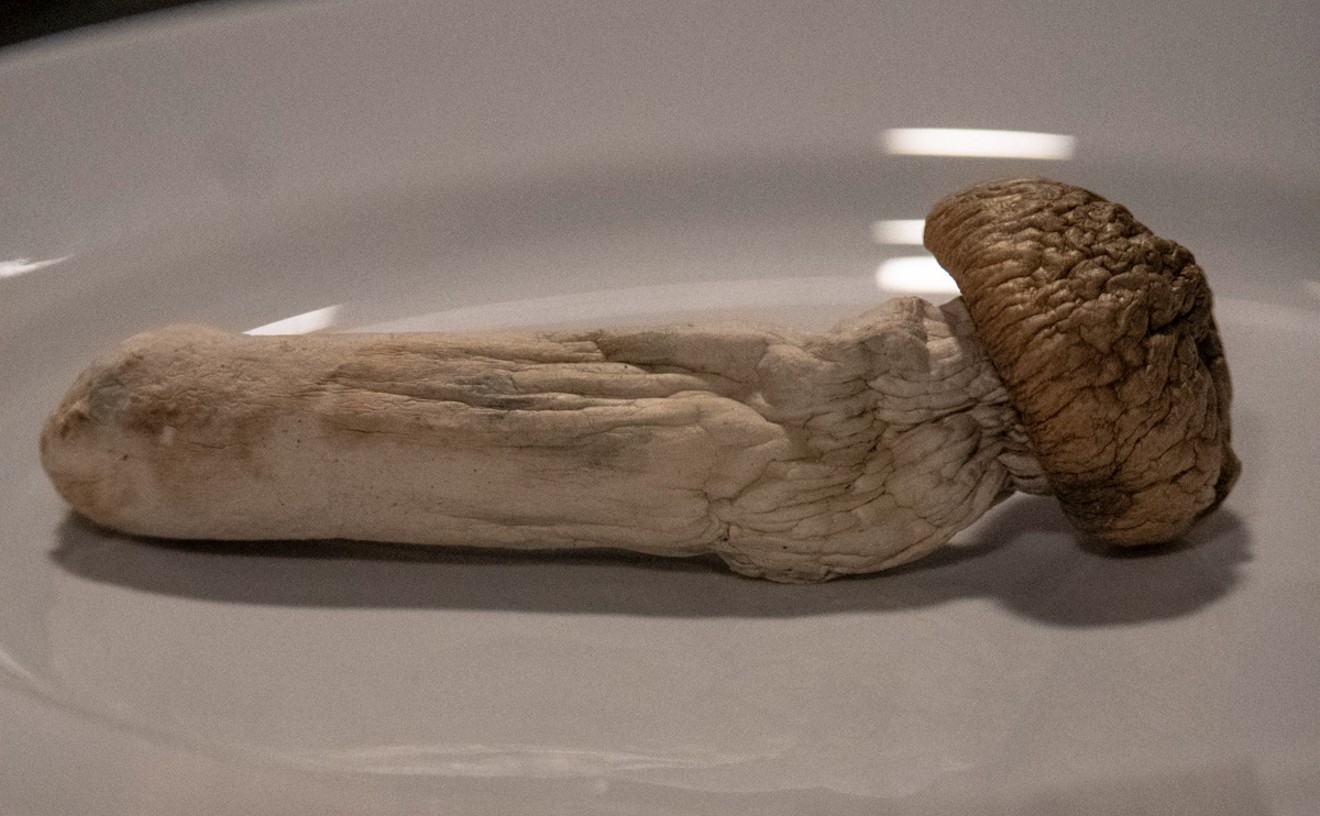Remember 2012? Peyton Manning had started his first season with the Broncos, and none of us knew jack about CBD. Seven years later, most of us still know jack about CBD, but at least we recognize how ignorant we are about that and other cannabis compounds.
The letters CBC, CBG and CBN probably look like acronyms for Canadian broadcasting entities to anyone outside of scientists and pot nerds, but they're actually lesser-known molecular fruits of the cannabis plant. And with hemp's recent legalization, we're hearing a lot more about these "new" cannabinoids and their medical and wellness potential. We recently caught up with scientist and former hemp grower Devin Alvarez, CEO of CBD company Straight Hemp, to learn more about this alphabet soup of cannabis.
Westword: Outside of CBD and THC, what other cannabinoids does the hemp plant produce?
Devin Alvarez: Science is what we know, and magic is science we don't understand yet. There is a deep magic to this plant still. Cannabis, or hemp, can produce somewhere between seventy to 120 different kinds of cannabinoids. They also produce, in some estimates, up to 700 types of terpenes. In addition to all that, the plant produces all kinds of bioactive molecules that nobody really understands yet.
Beyond CBD and THC, there are four primary cannabinoids of major interest right now: CBG, CBC, CBN and THC-V. It sounds like an alphabet soup. Canabigerol (CBG) is the parent molecule to THC and CBD — it's converted into them with time. Cannabichromene (CBC) also comes from that pool, but cannabinol (CBN) is essentially an oxidized byproduct of THC, either from leaving it out in the light or exposing it to heat for too long. CBD and CBN are even more closely related, and CBD can be converted into CBN. THC-V is a whole other pathway.
They're all rarer and more expensive than THC or CBD. Breeding and gene-editing efforts are bringing these to the forefront, and these programs can take years to bear fruit. CBG seems to be the primary focus of the four in the hemp industry right now. CBC, THC-V — those are rarer, and I haven't encountered those in bulk in the marketplace. CBN, however, will come along quickly, because scale production of converting CBD into CBN is gaining traction. So CBG and CBN are probably in line for next debuts.
What do these cannabinoids do differently or in conjunction with THC and CBD?
CBG affects a lot of receptors in your body, not just the endocannabinoid system, including the receptors that activate serotonin. CBG doesn't have those psychoactive properties of THC, so it could be another substitute to THC, like CBD is. CBG also appears to have more targeting effects, as it has shown to be more effective in modulating and reducing tremor and spasticity in the human bladder. But it's currently still very expensive, both in genetics and extraction methodology.
CBC, unlike CBG or THC, pushes its strongest effects outside the endocannabinoid system, and actually affects our endovanilloid system, which modulates our perceptions of pain. CBC has also been shown to reduce inflammation significantly compared to steroidal and non-steroidal medications. Now, is CBC better than CBD at this? The jury is still out. But we've also seen that CBC can enhance viability of stem cells in the brain, which in turn helps manage homeostasis. This all leads to thinking that CBC could be an important addition to THC and CBD, as almost a trifecta to further reach that entourage effect.
CBN has a reputation for being sedative, but research shows that CBN on its own isn't very sedative. THC, which is already known to produce drowsiness, is even stronger when CBN is added to the mix, though. CBN was actually first picked up from bailed weed from Mexico, which had been sitting around for a while, and that gave time for the THC to turn into CBN. But most of the mono-terpenes, which could make us feel active, also disappear with time, so that could also be why CBN is associated with being tired. CBN has also been shown to be a neuroprotectant.
Are these products consumed similarly to CBD and THC, via oils, edibles and topicals?
There is dabbable CBG isolate, but in terms of mass adoptions, it's really topicals and ingestibles. Topicals are the safest place to play with these molecules, because people aren't ingesting it.
Considering the public's struggles to learn about THC and CBD, how do you teach people about this alphabet soup of CBD, CBC, etc?
In Colorado, we're in a bit of a bubble, and people are moving on to other cannabinoids and terpenes. But fundamentally, it gets confusing with all the letters and acronyms. That itself will create confusion in the marketplace. I certainly believe the public has a strong capacity for education, especially in this information age. But with any technology and science, it takes a while to be understood. And the science out there about this kind of stuff is sparse. A lot of that is from the DEA, but now that research institutes are allowed to tap into hemp's greater genetic population, we'll start uncovering more of this over the next few years. And hemp is allowing a lot of this at scale, because it's not illegal like marijuana.
I question the intelligence of genetically editing the plant to overproduce certain cannabinoids and then testing it out without any safety studies on a population. Go low and slow and test it out yourself, like other drugs.
CBD is already in a legal gray area, and we know how the feds feel about THC. How does the legality behind these other cannabinoids work?
Let's look at CBN as an example. On a global level and in the Controlled Substances Act, CBN isn't listed as a controlled substance. Because it comes from hemp, CBN is even further removed from that gray area. But CBN from marijuana would probably fall under the Analog Act [a federal law stating compounds similar to a controlled substance must be treated as if it is controlled in that same drug schedule]. Hemp has segregated itself from that, but it really all comes down to what the FDA thinks. It's a new kind of a dietary ingredient or drug, or you could claim it's part of your product processing and is just a natural ingredient of the plant.
If this stuff just floors people and is intoxicating, then the FDA would definitely want it in the drug pipeline, or at least demand more studies that look into the safety of this stuff. But so much is up in the air right now with the FDA. Some people are calling for a whole new type of application, sort of a hybrid between drugs and dietary supplements.
It's a legal gray area, for sure, and some companies want to exploit the production of these molecules.
How much can hemp or marijuana produce these cannabinoids?
I think it's CBG, and then CBN. CBG, because you can grow the plants to make it more, making the FDA's fight even harder. With CBN, there is a conversion process to make it, but if the FDA doesn't get in the way, CBN will come online faster. These conversion processes are already pretty far along. CBG requires breeding and genetic efforts, and it's still pretty pricey.
[
{
"name": "Air - MediumRectangle - Inline Content - Mobile Display Size",
"component": "12017618",
"insertPoint": "2",
"requiredCountToDisplay": "2"
},{
"name": "Editor Picks",
"component": "17242653",
"insertPoint": "4",
"requiredCountToDisplay": "1"
},{
"name": "Inline Links",
"component": "18838239",
"insertPoint": "8th",
"startingPoint": 8,
"requiredCountToDisplay": "7",
"maxInsertions": 25
},{
"name": "Air - MediumRectangle - Combo - Inline Content",
"component": "17261320",
"insertPoint": "8th",
"startingPoint": 8,
"requiredCountToDisplay": "7",
"maxInsertions": 25
},{
"name": "Inline Links",
"component": "18838239",
"insertPoint": "8th",
"startingPoint": 12,
"requiredCountToDisplay": "11",
"maxInsertions": 25
},{
"name": "Air - Leaderboard Tower - Combo - Inline Content",
"component": "17261321",
"insertPoint": "8th",
"startingPoint": 12,
"requiredCountToDisplay": "11",
"maxInsertions": 25
}
]













